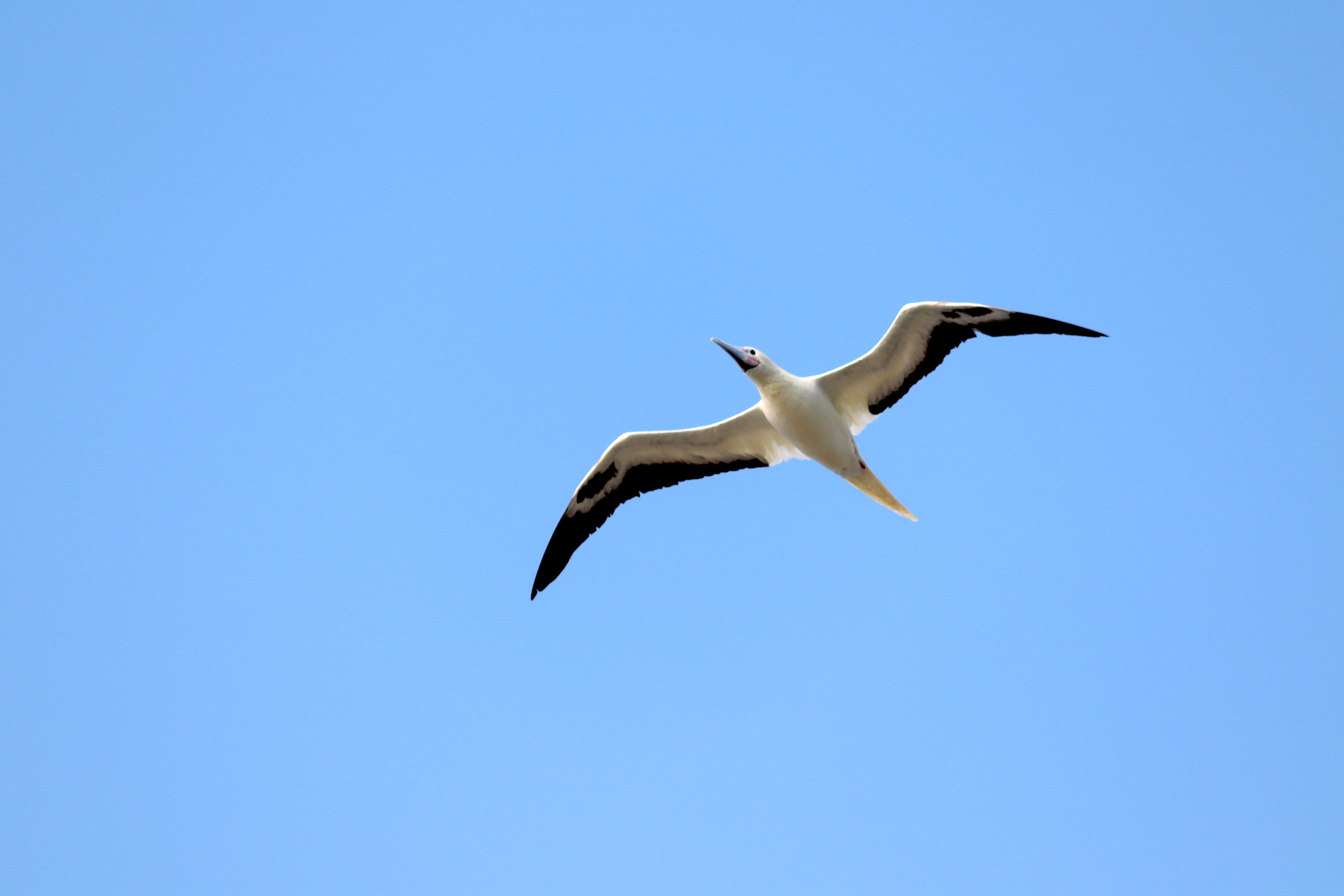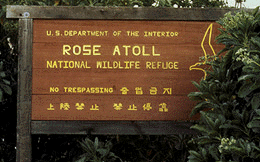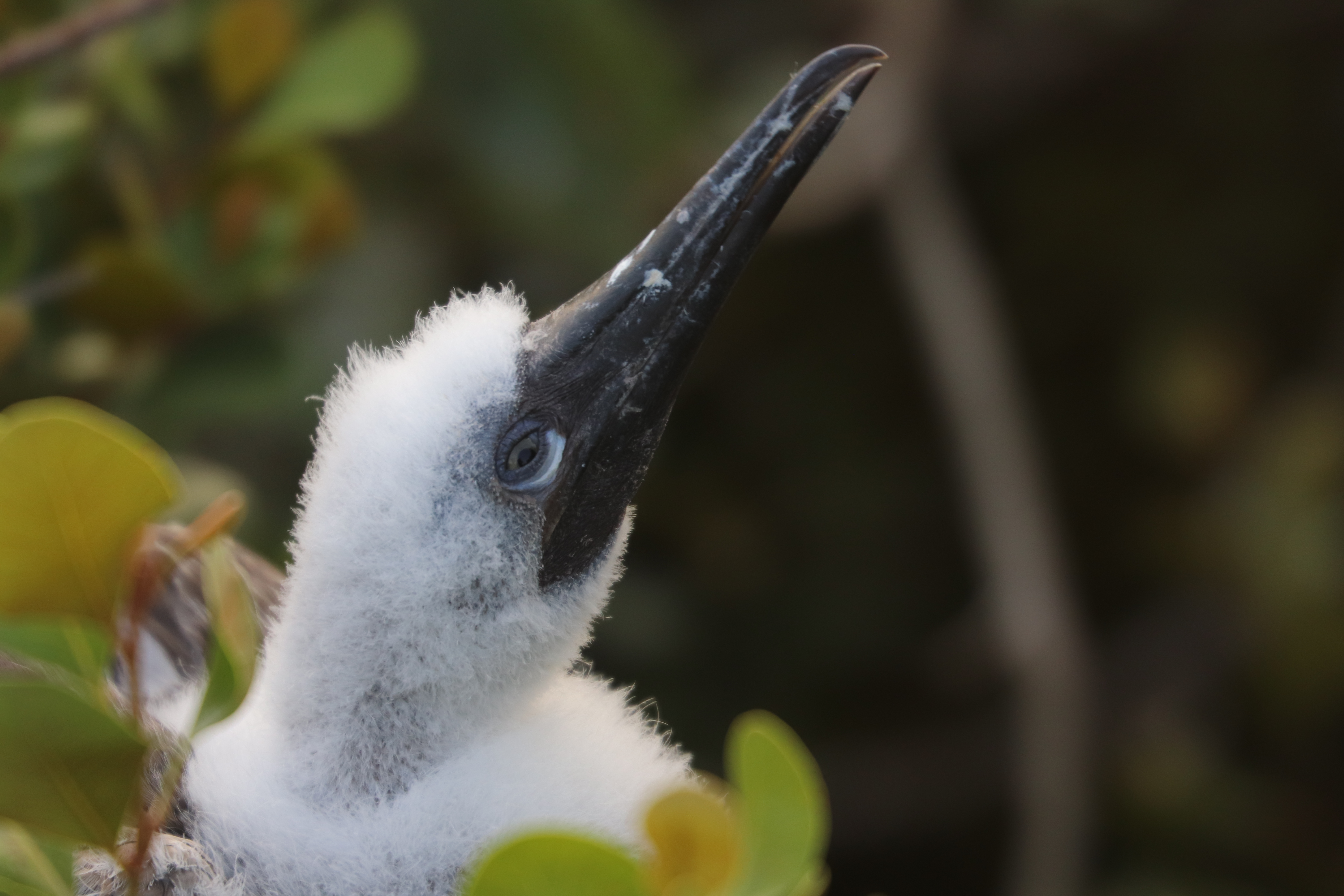|
Pola Island
Pola Island (Samoan: ''Motu o Pola'') is an island just offshore from the village of Vatia on Tutuila Island in American Samoa. It is also known as Cockscomb.Goldin, Meryl Rose (2002). ''Field Guide to the Samoan Archipelago: Fish, Wildlife, and Protected Areas''. Bess Press. .Harris, Ann G. and Esther Tuttle (2004). ''Geology of National Parks, Volume 2. Kendall Hunt''. Page 609. .Swaney, Deanna (1994). ''Samoa: Western & American Samoa: a Lonely Planet Travel Survival Kit''. Lonely Planet Publications. . Pola Island is designated as part of the National Park American Samoa, and is a popular tourist attraction. It is located on the west side of Vatia Bay, and serves as both a landmark and an icon for Vatia. Pola Island has been named one of American Samoa's Seven National Wonders by the ''Pago Pages''.Fai’ivae, Alex Godinet (2018). ''Ole Manuō o Tala Tu’u Ma Fisaga o Tala Ave''. Amerika Samoa Humanities Council. . It has been named "the most beautiful natural feature ... [...More Info...] [...Related Items...] OR: [Wikipedia] [Google] [Baidu] |
Pola Island
Pola Island (Samoan: ''Motu o Pola'') is an island just offshore from the village of Vatia on Tutuila Island in American Samoa. It is also known as Cockscomb.Goldin, Meryl Rose (2002). ''Field Guide to the Samoan Archipelago: Fish, Wildlife, and Protected Areas''. Bess Press. .Harris, Ann G. and Esther Tuttle (2004). ''Geology of National Parks, Volume 2. Kendall Hunt''. Page 609. .Swaney, Deanna (1994). ''Samoa: Western & American Samoa: a Lonely Planet Travel Survival Kit''. Lonely Planet Publications. . Pola Island is designated as part of the National Park American Samoa, and is a popular tourist attraction. It is located on the west side of Vatia Bay, and serves as both a landmark and an icon for Vatia. Pola Island has been named one of American Samoa's Seven National Wonders by the ''Pago Pages''.Fai’ivae, Alex Godinet (2018). ''Ole Manuō o Tala Tu’u Ma Fisaga o Tala Ave''. Amerika Samoa Humanities Council. . It has been named "the most beautiful natural feature ... [...More Info...] [...Related Items...] OR: [Wikipedia] [Google] [Baidu] |
Vatia, American Samoa
Vatia is a village on Tutuila, Tutuila Island in American Samoa. It is a north shore village located on Vatia Bay. The road to Vatia, American Samoa Highway 006, is the only road going through National Park of American Samoa. Vatia is a scenic community at the foot of Pola Ridge and surrounded by the national park. It is only reached by Route 6 which traverses the national park before reaching Vatia. There was once a hiking trail over Maugaloa Ridge from Leloaloa, but since the completion of Route 6, this trail is now overgrown. It is home to a beach, and panoramic views of jungle-covered peaks surround the village on all sides. Vatia is the center of the Tutuila-section of National Park of American Samoa.Stanley, David (2004). ''Moon Handbooks South Pacific''. David Stanley. Page 479. . It is located in Vaifanua County, American Samoa, Vaifanua County. Vatia is home to several concrete bunkers from World War II located on and around the beach. The scenic road between Vatia and Afo ... [...More Info...] [...Related Items...] OR: [Wikipedia] [Google] [Baidu] |
Tutuila Island
Tutuila is the main island of American Samoa (and its largest), and is part of the archipelago of Samoan Islands. It is the third largest island in the Samoan Islands chain of the Central Pacific. It is located roughly northeast of Brisbane, Australia and lies over to the northeast of Fiji. It contains a large, natural harbor, Pago Pago Harbor, where Pago Pago, the capital of American Samoa, is situated. Pago Pago International Airport is also located on Tutuila. The island’s land expanse is about 68% of the total land area of American Samoa. With 56,000 inhabitants, it is also home to 95% of the population of American Samoa. The island has six terrestrial and three marine ecosystems. Tutuila has mountainous regions, the highest point of which is ). The island is attractive to tourists because of its beaches, coral reefs, and World War II relics, as well as its suitability for sporting activities such as scuba diving, snorkeling, and hiking. Etymology It is said that the nam ... [...More Info...] [...Related Items...] OR: [Wikipedia] [Google] [Baidu] |
American Samoa
American Samoa ( sm, Amerika Sāmoa, ; also ' or ') is an unincorporated territory of the United States located in the South Pacific Ocean, southeast of the island country of Samoa. Its location is centered on . It is east of the International Date Line, while Samoa is west of the Line. The total land area is , slightly more than Washington, D.C. American Samoa is the southernmost territory of the United States and one of two U.S. territories south of the Equator, along with the uninhabited Jarvis Island. Tuna products are the main exports, and the main trading partner is the rest of the United States. American Samoa consists of five main islands and two coral atolls. The largest and most populous island is Tutuila, with the Manuʻa Islands, Rose Atoll and Swains Island also included in the territory. All islands except for Swains Island are part of the Samoan Islands, west of the Cook Islands, north of Tonga, and some south of Tokelau. To the west are the islands of the Wall ... [...More Info...] [...Related Items...] OR: [Wikipedia] [Google] [Baidu] |
Brown Booby
The brown booby (''Sula leucogaster'') is a large seabird of the booby family Sulidae, of which it is perhaps the most common and widespread species. It has a pantropical range, which overlaps with that of other booby species. The gregarious brown booby commutes and forages at low height over inshore waters. Flocks plunge-dive to take small fish, especially when these are driven near the surface by their predators. They only nest on the ground, and roost on solid objects rather than the water surface. Taxonomy The brown booby was described by the French polymath Georges-Louis Leclerc, Comte de Buffon in his ''Histoire Naturelle des Oiseaux'' in 1781. The bird was also illustrated in a hand-coloured plate engraved by François-Nicolas Martinet in the ''Planches Enluminées D'Histoire Naturelle'' which was produced under the supervision of Edme-Louis Daubenton to accompany Buffon's text. Buffon did not include a scientific name with his description but in 1783 the Dutch naturalist ... [...More Info...] [...Related Items...] OR: [Wikipedia] [Google] [Baidu] |
Sula Sula Nesting In Heliotropium Foertherianum
Sula may refer to: Places Norway * Sula (island), an island in Sula municipality, Møre og Romsdal county * Sula, Møre og Romsdal, a municipality in Møre og Romsdal county * Sula, Solund, an island in Solund municipality, Vestland county * Ytre Sula (Solund), an island in Solund municipality, Vestland county * Sula, Trøndelag, an island group in Frøya municipality, Trøndelag county * Indre Sula and Ytre Sula, two mountains in Surnadal municipality, Møre og Romsdal county Other locations * Sula, Iran, a village in Ardabil Province, Iran * Sula, Montana, a census-designated place in the United States * Sula Island, an island in the Philippines * Sula Islands Regency, Indonesia * Sula (Dnieper), a tributary of the Dnieper in Ukraine * Sula (Mezen), a tributary of the Mezen in northern Russia * Sula (Pechora), a tributary of the Pechora in northern Russia * Sula Sgeir, an island group in Scotland * San Pedro Sula, a city in Honduras People Given name * Sula Be ... [...More Info...] [...Related Items...] OR: [Wikipedia] [Google] [Baidu] |
Red-footed Boobies
The red-footed booby (''Sula sula'') is a large seabird of the booby family, Sulidae. Adults always have red feet, but the colour of the plumage varies. They are powerful and agile fliers, but they are clumsy in takeoffs and landings. They are found widely in the tropics, and breed colonially in coastal regions, especially islands. The species faces few natural or man-made threats, although its population is declining; it is considered to be a least-concern species by the International Union for Conservation of Nature (IUCN). Taxonomy The first formal description of the red-footed booby was by the Swedish naturalist Carl Linnaeus in 1766 in the twelfth edition of his ''Systema Naturae''. He introduced the binomial name ''Pelecanus sula''. The type locality is Barbados in the West Indies. The present genus ''Sula'' was introduced by the French scientist Mathurin Jacques Brisson in 1760. The word ''Sula'' is Norwegian for a gannet. There are three subspecies: * ''S. s. sula'' ... [...More Info...] [...Related Items...] OR: [Wikipedia] [Google] [Baidu] |
Rose Atoll
Rose Atoll, sometimes called Rose Island or Motu O Manu ("Bird Island") by people of the nearby Manu'a Islands, is an oceanic atoll within the U.S. territory of American Samoa. An uninhabited wildlife refuge, it is the southernmost point belonging to the United States. The land area is just at high tide. The total area of the atoll, including lagoon and reef flat amounts to . Just west of the northernmost point is a channel into the lagoon, about 40 m wide. There are two islets on the northeastern rim of the reef, larger Rose Island in the east (3.5 m high) and the non-vegetated Sand Island in the north (1.5 m high). The Rose Atoll Marine National Monument that lies on the two outstanding islands of the Atoll is managed cooperatively between the U.S. Fish and Wildlife Service and the government of American Samoa. History The earliest Western sighting was June 13, 1722, during the voyage of Jacob Roggeveen, who called it ''Vuil Eiland'' "useless island." The name Rose Island ... [...More Info...] [...Related Items...] OR: [Wikipedia] [Google] [Baidu] |
Red-footed Booby
The red-footed booby (''Sula sula'') is a large seabird of the booby family, Sulidae. Adults always have red feet, but the colour of the plumage varies. They are powerful and agile fliers, but they are clumsy in takeoffs and landings. They are found widely in the tropics, and breed colonially in coastal regions, especially islands. The species faces few natural or man-made threats, although its population is declining; it is considered to be a least-concern species by the International Union for Conservation of Nature (IUCN). Taxonomy The first formal description of the red-footed booby was by the Swedish naturalist Carl Linnaeus in 1766 in the twelfth edition of his ''Systema Naturae''. He introduced the binomial name ''Pelecanus sula''. The type locality is Barbados in the West Indies. The present genus ''Sula'' was introduced by the French scientist Mathurin Jacques Brisson in 1760. The word ''Sula'' is Norwegian for a gannet. There are three subspecies: * ''S. s. sula'' ... [...More Info...] [...Related Items...] OR: [Wikipedia] [Google] [Baidu] |
Brown Noddy
The brown noddy or common noddy (''Anous stolidus'') is a seabird in the family Laridae. The largest of the noddies, it can be told from the closely related black noddy by its larger size and plumage, which is dark brown rather than black. The brown noddy is a tropical seabird with a worldwide distribution, ranging from Hawaii to the Tuamotu Archipelago and Australia in the Pacific Ocean, from the Red Sea to the Seychelles and Australia in the Indian Ocean and in the Caribbean to Tristan da Cunha in the Atlantic Ocean. The brown noddy is colonial, usually nesting on elevated situations on cliffs or in short trees or shrubs. It only occasionally nests on the ground. A single egg is laid by the female of a pair each breeding season. In India, the brown noddy is protected in the PM Sayeed Marine Birds Conservation Reserve. Taxonomy The first formal description of the brown noddy was by the Swedish naturalist Carl Linnaeus in 1758 in the tenth edition of his ''Systema Naturae'' u ... [...More Info...] [...Related Items...] OR: [Wikipedia] [Google] [Baidu] |
Greater Frigatebird
The great frigatebird (''Fregata minor'') is a large seabird in the frigatebird family. There are major nesting populations in the tropical Pacific (including the Galapagos Islands) and Indian Oceans, as well as a tiny population in the South Atlantic. The great frigatebird is a large and lightly built seabird up to 105 cm long with predominantly black plumage. The species exhibits sexual dimorphism; the female is larger than the adult male and has a white throat and breast, and the male's scapular feathers have a purple-green sheen. In the breeding season, the male is able to distend his striking red gular sac. The species feeds on fish taken in flight from the ocean's surface (mostly flying fish), and indulges in kleptoparasitism less frequently than other frigatebirds. They feed in pelagic waters within 80 km (50 mi) of their breeding colony or roosting areas. Taxonomy The great frigatebird was formally described in 1789 by the German naturalist Johann Fried ... [...More Info...] [...Related Items...] OR: [Wikipedia] [Google] [Baidu] |
Lesser Frigatebird
The lesser frigatebird (''Fregata ariel'') is a seabird of the frigatebird family Fregatidae. At around 75 cm (30 in) in length, it is the smallest species of frigatebird. It occurs over tropical and subtropical waters across the Indian and Pacific Oceans as well as off the Atlantic coast of Brazil. The lesser frigatebird is a lightly built seabird with brownish-black plumage, long narrow wings and a deeply forked tail. The male has a striking red gular sac which he inflates to attract a mate. The female is slightly larger than the male and has a white breast and belly. Frigatebirds feed on fish taken in flight from the ocean's surface (often flying fish), and sometimes indulge in kleptoparasitism, harassing other birds to force them to regurgitate their food. Taxonomy The lesser frigatebird was first described as ''Atagen ariel'' by the English zoologist George Gray in 1845 from a specimen collected on Raine Island, Queensland, Australia. The lesser frigatebird is one ... [...More Info...] [...Related Items...] OR: [Wikipedia] [Google] [Baidu] |








